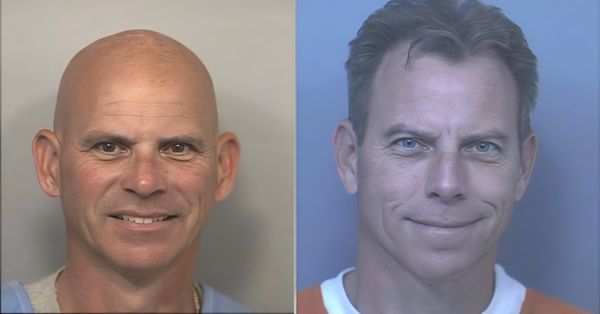On March 13, 2020, I got a call from the local juvenile hall canceling my class on the poetry and politics of Malcolm X. It was just days into the COVID-19 lockdown that canceled all prison visits. My frustration kept me up that night. Incarcerated students looked forward to attending the weekly class we provided through the UCLA Prison Education Program, not to mention seeing their parents and loved ones.
For weeks I couldn’t communicate with my students, and detention center staff told me tensions were rising in the facility. Ultimately, wardens accepted videoconferencing as a better alternative than no visitation at all. Family visits were reinstated via video, and our college program resumed using Microsoft Teams.
The pandemic has accelerated the world’s digital transformation, forcing more daily life to happen online. For those of us working to dismantle the prison industrial complex, it laid bare the urgent need to make technology more accessible to those behind bars.
Technologies used daily by millions nationwide have long been denied to incarcerated people. In the courses I teach at California’s county, state and federal prisons, incarcerated students have been allowed to use computers once or twice each week to type research papers and assignments, but unable to access the internet for further research or work.
When prisons do provide incarcerated people with technology it is often outdated and not well maintained. In teaching, performing and organizing workshops in correctional facilities in half of the 50 states, I have seen countless computers running operating systems that don’t support Skype, Zoom, Microsoft Teams or other applications that have proliferated during the pandemic.
Even more alarming, attempts to modernize this technology in recent years have been financially exploitative. A few years ago JPay, a subsidiary of the prison communications company Securus Technologies, offered tablet devices to New York prisons for free but charged for services such as email, ebooks, music and games. The company projected a net profit for the program of $8.8 million by August 2022.
Companies including Securus and the private prison telecom contractor GTL, which reportedly controls around 50% of prison telecoms contracts, charged so exorbitantly for phone calls that last year the Federal Communications Commission capped interstate call prices to 12 cents a minute, or 14 cents in larger facilities. (For context, the hourly minimum prison wage for a job with Federal Prison Industries is 12 cents.) GTL is the company the California Department of Corrections and Rehabilitation contracted to expand access to tablets and computer kiosks, and critics argue the rollout in state prisons has been disturbingly slow.
Privacy issues are also at stake. Prison telephone calls are regularly monitored, with some prisons around the country using artificial intelligence to mass-monitor calls. New technologies could easily be used to increase surveillance of incarcerated people and those they communicate with on the outside. This includes family, friends and loved ones in communities that are already overly policed and incarcerated. GTL obtained a patent last year for a virtual reality program to connect incarcerated people with their loved ones. Included in the patent application is a “monitoring system” that “continuously monitors visual information of the virtual reality session.”
But prohibiting technology in prisons can have serious long-term consequences. Colleges increasingly require students to have a laptop, even more so since the pandemic required and normalized online learning. For incarcerated people, pursuing postsecondary education is critical to securing work and building a new life after coming home. Education can reduce the recidivism rate by an estimated 43%. The higher the degree earned, the lower recidivism drops: 14% for an associate’s degree, 5.6% for a bachelor’s and 0% for a master’s.
Given the dire need for tech in prisons, why not have state and federal education budgets cover the cost of laptops for the more than 2 million incarcerated people in the U.S.? Why not have foundations help cover the cost at city jails and county juvenile halls?
Organizations already working in prisons are equipped to facilitate the distribution, if funded adequately to do so. By owning the technology, rather than borrowing it while behind bars, those incarcerated will leave prison with urgently needed tech access after returning home. This would be a relatively inexpensive investment that does not waste taxpayers’ money generating profits for private contractors. A laptop, which averages under $1,000, costs less than 1% of the more than $100,000 it takes to imprison someone in California for a year.
Corrections departments should defer to the leadership of grass-roots organizations, such as A New Way of Life Reentry Project in Los Angeles and Community Capacity Development in New York, to distribute these devices. Think tanks organized by such groups and including incarcerated students can guide this investment in Native, Black and Latinx communities, women and working-class folks — those who have for generations endured the trauma of mass incarceration.
There’s no reason prison education can’t include cutting-edge technology. The United Kingdom’s National Prison Radio broadcasts to 80,000 incarcerated people from professional studios in the Brixton prison. While teaching at Oxford University, I used Skype to connect British art students to incarcerated people at D.C. Jail for a hip-hop theater and spoken word poetry workshop. In New York and California, I worked with filmmakers Jonathan Demme and Scott Budnick to produce TED Talks featuring people incarcerated at Sing Sing and Ironwood prisons, honing their public speaking skills and sharing their stories online with millions.
Providing access to tech tools and education programs will help those behind bars develop skills necessary to survive in a 21st century economy. This is a crucial step toward preparing and empowering incarcerated people for successful community reentry, reducing recidivism and dismantling the prison industrial complex.
____
ABOUT THE WRITER
Bryonn Bain, author of “Rebel Speak: A Justice Movement Mixtape” and the award-winning theatrical production “Lyrics From Lockdown,” is an artist, professor and founding director of the Prison Education Program at UCLA.







